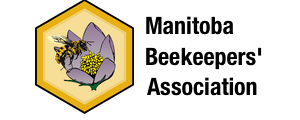The following article is provided courtesy of David Barnes, Kona Queen Hawaii, and is provided for your information about the 2010 situation involving their business.
KONA QUEEN HAWAII, INC.
Best Management Practices for Small Hive Beetle
In April 2010 South African Small Hive Beetles, Aethina tumida Murry, (SHB) were found in Hilo, Hawaii; the East coast of Hawaii.
Kona Queen Hawaii’s response was to begin a progressive approach to the management and control of the SHB before they become fully established on the island of Hawaii.
Our first approach was to employ, on a full time basis, a consultant from the Florida Department of Agriculture; experienced with SHB research and managing SHB in the tropical/sub-tropical environment of Florida.
Since that time we have been applying proven SHB management techniques, establishing SHB protocols for employees, while testing new methods of control for our unique apiaries and environment. Through our contacts in both the honeybee industry and research community we have established working relationships with:
- Hawaiian Department of Agriculture (Darcy Oishi)
- Florida Department of Agriculture (Jerry Hayes)
- University of Florida (Dr. Jamie Ellis)
- USDA-ARS- Gainesville, Florida (Dr. Peter Teal)
- USDA-ARS- Beltsville, Maryland (Dr. Jeff Pettis)
- Pennsylvania State University (Dennis VanEnglesdorp)
With this approach we have established these Best Management Practices for managing and controlling SHB in the hives of Kona Queen. In these early phases of SHB infestation; we are in the process of constantly testing and improving our strategies and protocols to protect our shipments of queens.
Hive Management for Standard 10frame Langstroth hives:
- All hives are monitored every two weeks, minimally, for population strength, pollen substitute consumption, and presence of beetles.
- Hives are being placed into direct sunlight as a deterrent for SHB. [“An Effective Trap and Bait Combination for Monitoring the Small Hive Beetle, Aethina tumida (Coleoptera:Nitidulidae)” , published in the Florida Entomologist 90 (2) June 2007 pp404-406]
- Beetle Barns containing Check-mite are placed in all hives showing high levels of adult SHB. [“Small Hive Beetle diagnosis and control in naturally infested colonies using bottom board traps and CheckMite+strips”, Peter Neumann and Dorothee Hoffman, Journal of Pest Science, Volume 81, Number 1, 43-48]
- Any larva found in combs are immediately frozen to prevent comb destruction and reduce the spread of SHB into the environment.
Mating Nucleus (Nucs)
- All Nucs are monitored every two weeks for strength of worker population. Any weak Nuc populations found are immediately remedied; by increasing population or pulling the nuc from production.
- Any larva found in combs are immediately frozen to prevent comb destruction and reduce the spread of SHB into the environment.
Beetle Barns containing Check-Mite are immediately placed in Nucs found with populations of adult SHB
Banked Queens and Shipments
- Hive populations are monitored daily.
- Specialized bottom boards are used to prevent populations of SHB.
- Beetle Barns containing Check-Mite are placed in any hives showing SHB population.
- Queens are packaged in an environment away from SHB activity.
- Attendants for queens are selected from recently placed foundation to prevent the presence of SHB on combs and in the packaging area.
- All queens are transferred into clean cages before shipment to any region(s) not exposed to SHB; thus preventing the transmission of SHB eggs or larva.
Queen Genetics
Historically we have continuously selected for “Hygienic behavior” which has been proven to aid in the reduction of SHB in hives. [J.D. Ellis 2005, Bee World 86: 56-62]
Extraction and Comb Storage facility
- All honey is extracted within three days of arrival, or as soon as possible. (Honey excluders and the use of a permanent feed super, as a buffer between the brood chamber and surplus honey, prevent our surplus honey supers from being attractive to SHB.)
- Combs are placed back on hives or stored in a low humidity environment to prevent SHB eggs from hatching.
- Extraction equipment is cleaned following extraction; leaving no standing honey or wax cappings.
- Specialized SHB traps, developed by the USDA, are placed around the perimeter and interior of the property.
Kona Queen Hawaii is committed to the aforementioned Best Management Practices for Small Hive Beetle. These practices are proving beneficial in the control of SHB in our apiaries and for the continued production of quality queen bees for the beekeeping industry.
